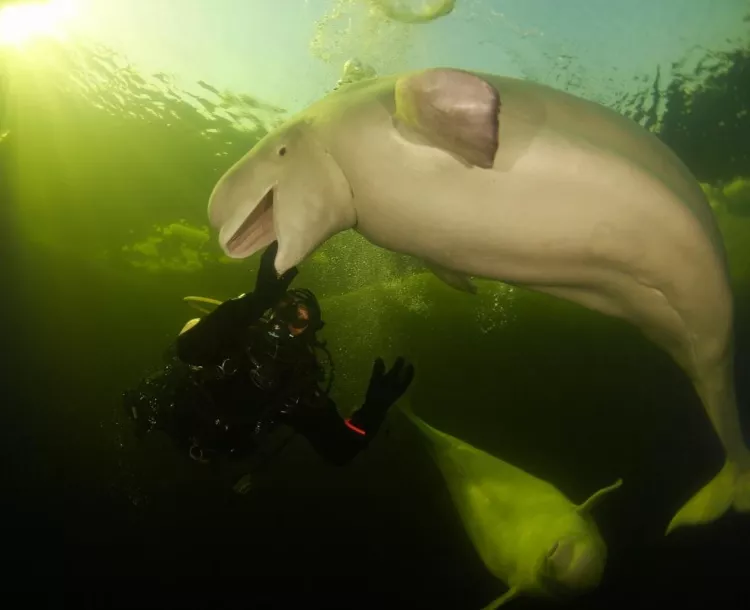Does this whale talk?
Researchers in the US have been shocked to discover a beluga whale whose vocalisations were remarkably close to human speech. After seven years in the care of humans a white whale called NOC began, spontaneously, to make unusual sounds. The researchers interpreted the whale’s vocalizations as an attempt to mimic humans.
Excerpts from Current Biology, Volume 22, Issue 20, R860-R861, 23 October 2012
The whale lived among a group of dolphins and socialized with two female white whales. The whale was exposed to speech not only from humans at the surface -- it was present at times when divers used surface-to-diver communication equipment.
The whale was recognized as the source of the speech-like sounds when a diver surfaced outside this whale's enclosure and asked "Who told me to get out?" The observations led the scientists to conclude the "out" which was repeated several times came from NOC.
We interpreted the whale's vocalizations as an attempt to mimic humans. Whale vocalizations often sounded as if two people were conversing in the distance just out of range for our understanding. These 'conversations' were heard several times before the whale was identified as the source.
As soon as NOC was identified as the source of these sounds, we recorded his speech-like episodes both in air and underwater (Supplemental Information ). Recordings revealed an amplitude rhythm similar to human speech. Although there was variation, vocal bursts averaged about three per second.
The rhythm of vocal bursts also reminded us of human speech. Intervals between bursts were generally of 0.05 to 0.5 seconds. Fundamental frequencies were in the range of 200 to 300 Hz — similar to human speech and several octaves lower than the whale’s usual sounds
Spectral characteristics with multiple harmonics were unlike usual whale sounds but not unlike those of the human voice.




























